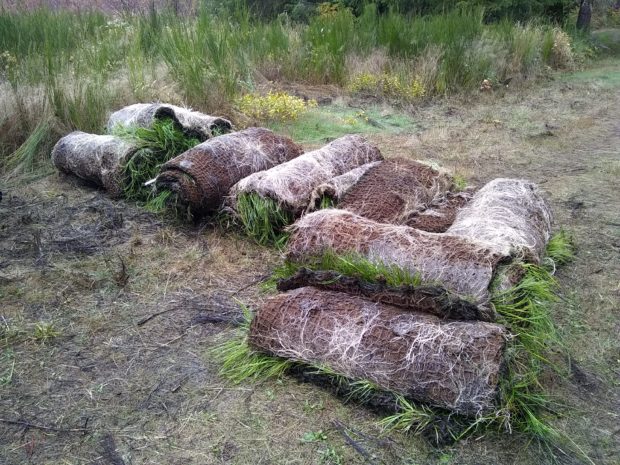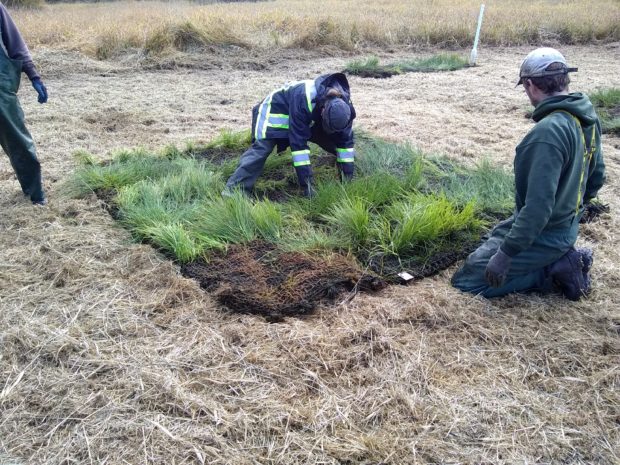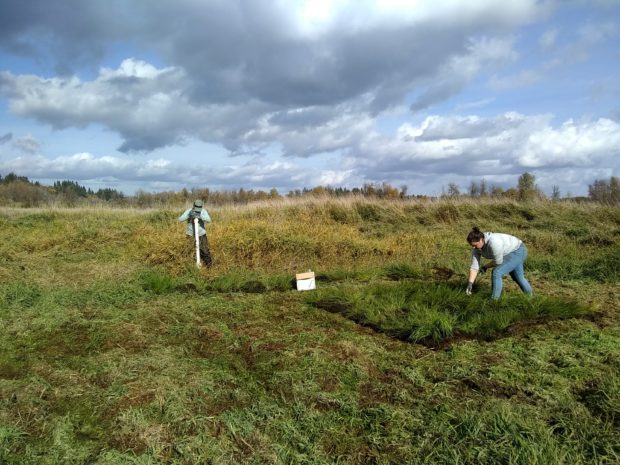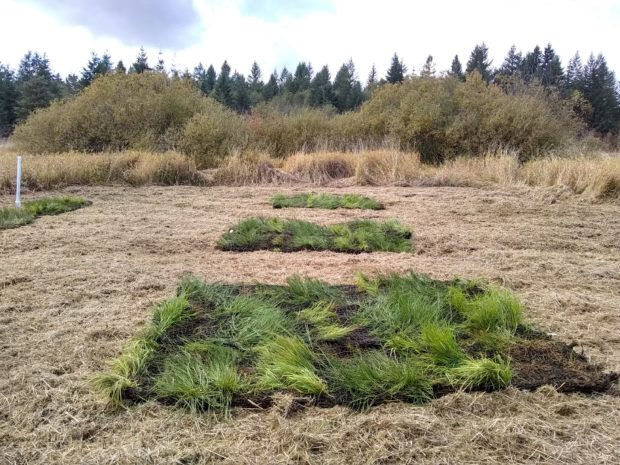Photos and text by Amanda Mintz, SPP EVM Program Coordinator
In mid-October, SPP delivered our third batch of Emergent pre-Vegetated Mats (EVM) to wetlands at West Rocky Prairie, Joint Base Lewis McChord (JBLM) and Mima Creek Preserve. At these sites, the Center for Natural Lands Management (CNLM) is conducting an experiment using the mats as part of a reed canarygrass suppression strategy. Replacing the reed canarygrass with wetland plants will help restore habitat for the threatened Oregon spotted frog. This project is supported with funding and resources by the Washington Department of Fish and Wildlife, United States Fish and Wildlife Service, CNLM, and JBLM.

Prior to delivery, we rolled up the mats and let them drain for 24 hours. Even with reduced water, each mat weighs about 60 pounds when it is delivered—healthy roots and shoots are heavy!
Each mat contains a combination of native wetland plants: spreading rush (Juncus supiniformis), tall mannagrass (Glyceria elata), and creeping spike-rush (Eleocharis palustris). The mats were produced in Stafford Creek Corrections Center’s aquaponics greenhouse by a team of corrections staff, incarcerated technicians, and SPP-Evergreen staff.

Staff and volunteers from CNLM and JBLM lay three, 1-meter by 3-meter mats side by side and anchor them with biodegradable stakes.
At each site, the mats are arranged in squares, three meters on each side. Staff and volunteers from JBLM and CNLM prepared the sites using a variety of combinations of herbicide, mowing, and solarization to remove the reed canarygrass; on the day of mat installation, they removed dead grass and root material with weed cutters making it easier for the plants in the mats to make contact with soil and establish themselves quickly. Teams will revisit each square to determine which of the various reed canarygrass treatments best allowed the native wetland species to take hold.

At the site shown here, reed canarygrass was treated only by mowing; in the background, you can see its pre-mowing height of up to six feet tall. Sarah Hamman deploys a water depth gauge–believe it or not, this is a wetland!
Will the coconut coir mats prevent reed canarygrass from growing back? Will the native plants grow quickly enough to establish healthy populations, competing for space with the reed canarygrass? Stay tuned to find out!

Three, 3-meter square mats in each replicate (experimental copy), three replicates per site, and three sites!